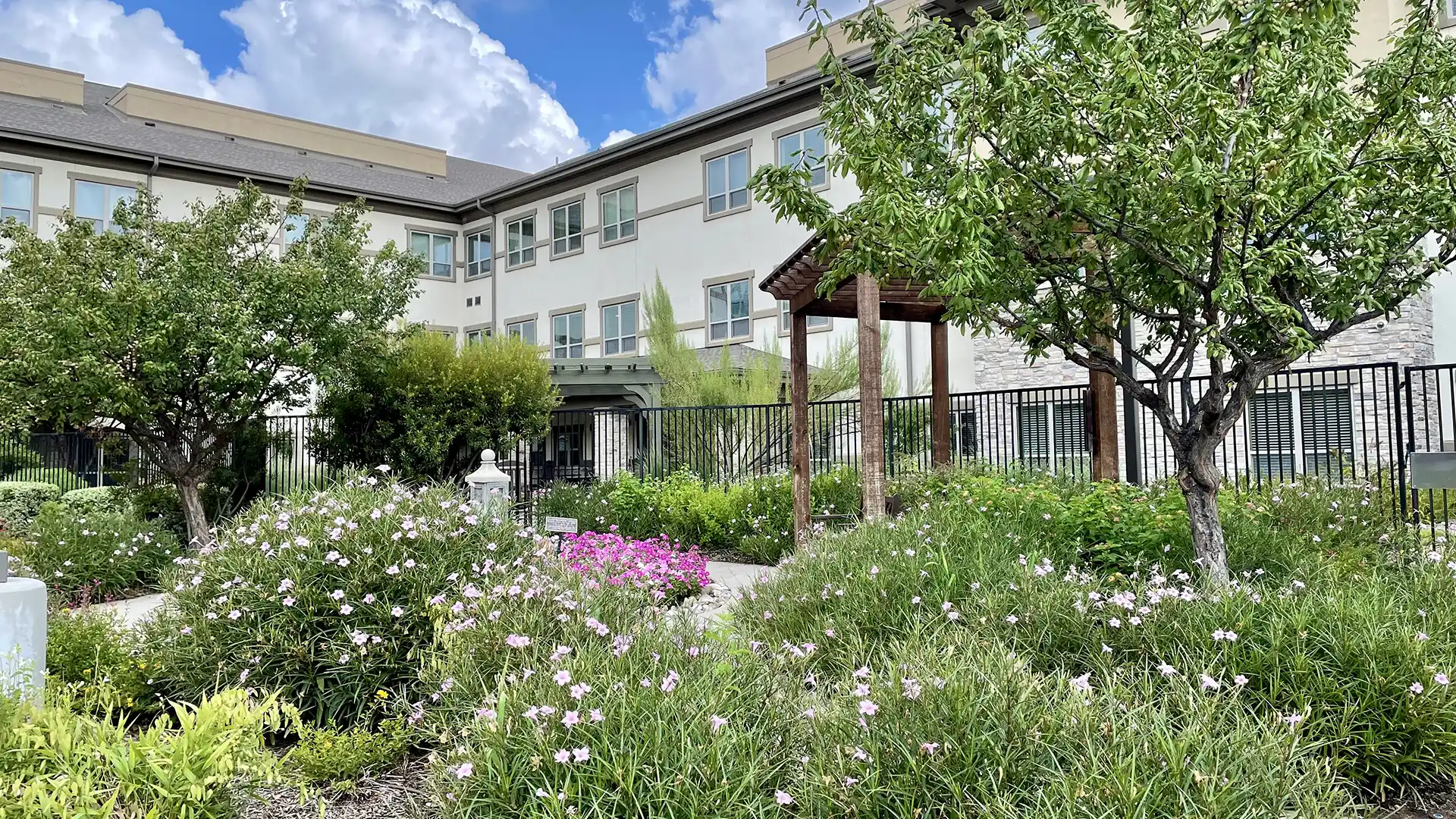When a loved one is diagnosed with dementia, families often struggle with the decision of whether to continue providing care at home or if a specialized memory care community would support a higher quality of life.
While home may feel familiar, it’s not always the safest environment for those experiencing cognitive decline. While memory care communities are able to provide activities and engagement that are tailored to the individual resident, there is another advantage that occurs before care is even provided.
Memory care community design enhances the safety, comfort and well-being of residents in ways that might be difficult to achieve in a private home. Families and their loved ones will appreciate the layouts that not only create a comfortable space but encourage residents to spend time outside of their apartments and benefit from social interaction.
Memory Care Community Design: A Safe and Supportive Environment
Consider how the following benefits result from the specially designed features in a memory care community.
1. Reduced Risk of Wandering
Wandering can be a common challenge among individuals with dementia, regardless of what stage of the disease they may be in. This can become a significant danger for those who are living at home and may leave unnoticed.
Memory care communities include secured entry and exits so that a resident cannot leave unsupervised. Many also incorporate an enclosed courtyard that allows residents to go outside freely without feeling restricted. In this way residents enjoy both their freedom and security.
2. Floor Plans That Allow Easy Navigation
Confusion or disorientation can lead to anxiety and frustration for residents, so memory care communities design a layout that helps prevent residents from feeling lost. There are often symbols or features that help orient individuals. Residents are also encouraged to personalize their doors to further help in differentiating their apartment from the others.
3. Fall Prevention Measures
Falls are a leading cause of injury among older adults, and the risk can increase for those living with cognitive decline. Most private homes are not designed with aging in mind and may present accessibility or tripping obstacles.
Ways in which memory care communities prioritize fall prevention include slip-resistant flooring, effective lighting and eliminating any tripping hazards.
Memory care Community Design: A Comfortable and Familiar Atmosphere
The community is home for the residents, and care is taken to include areas that are comfortable and inviting.
1. Home Settings
While memory care communities are designed to be safe, they also prioritize creating spaces that are warm and familiar, including personalized spaces, cozy common areas and engaging features such as fireplaces and gardens. There are many places to gather and share an activity or conversation.
2. Calming Sensory Environments
Individuals with dementia appreciate the soothing color schemes, soft lighting and comfortable furniture which are part of the overall design. Communities also use visual cues and colors to help residents recognize their surroundings.
3. Private and Community Spaces for Social Engagement
Social isolation can accelerate cognitive decline, which is why memory care communities emphasize opportunities for residents to interact by designing spaces for activities, dining and conversations. Residents are encouraged not to stay in their apartments and can choose from many options of interest.
Memory care Community Design: Specialized Amenities
Good design extends beyond the architectural and includes the details that add to the quality of life for the residents.
1. Therapeutic Elements
Memory care communities often include places designed to encourage positive memories and emotions. Sensory gardens, music therapy spaces and comfortable living areas to watch movies add to the welcomeness of home.
2. Supportive Technology
Memory care communities utilize technology to support safety and independence, such as secured and monitored doors and motion-sensor lighting. Families who live far away can negate the distance by connecting with their loved one through video calls.
Memory care Community Design: Beyond the Aesthetics
There are many benefits that a memory care community offers to residents and their families. Starting with specially trained and compassionate caregivers, healthy meals, physical and emotional support and personalized activities, families are reassured that their loved ones are not only safe but are living a higher quality of life.
Along with a special design, memory care residents benefit from the security, structure and social engagement of their community that provides everything needed to help them feel at home.
Memory Support at Presbyterian Village North
At Presbyterian Village North, we support both the individual and the family as they navigate the dementia journey.
We focus on the quality of life for our residents with a staff specially trained in the best practices of dementia care. Residents make their homes in private apartments while benefiting from the daily interactions with others and participating in our exercise, music, art and cognitive therapies.
With outdoor seating and dining possibilities, our secure garden courtyard and protected walking paths encourage our residents to venture outside while remaining safe from wandering.
We also provide the following services:
- Licensed nursing staff onsite 24/7
- Medication administration
- Assistance with activities of daily living
- Chef-prepared cuisine
- Special activities and social programs
- Access to a full continuum of care
Presbyterian Village North is a compassionate resource for your loved one and your family. Please call (214) 355-9000 if you have any questions or would like to schedule a personal visit to our community.


